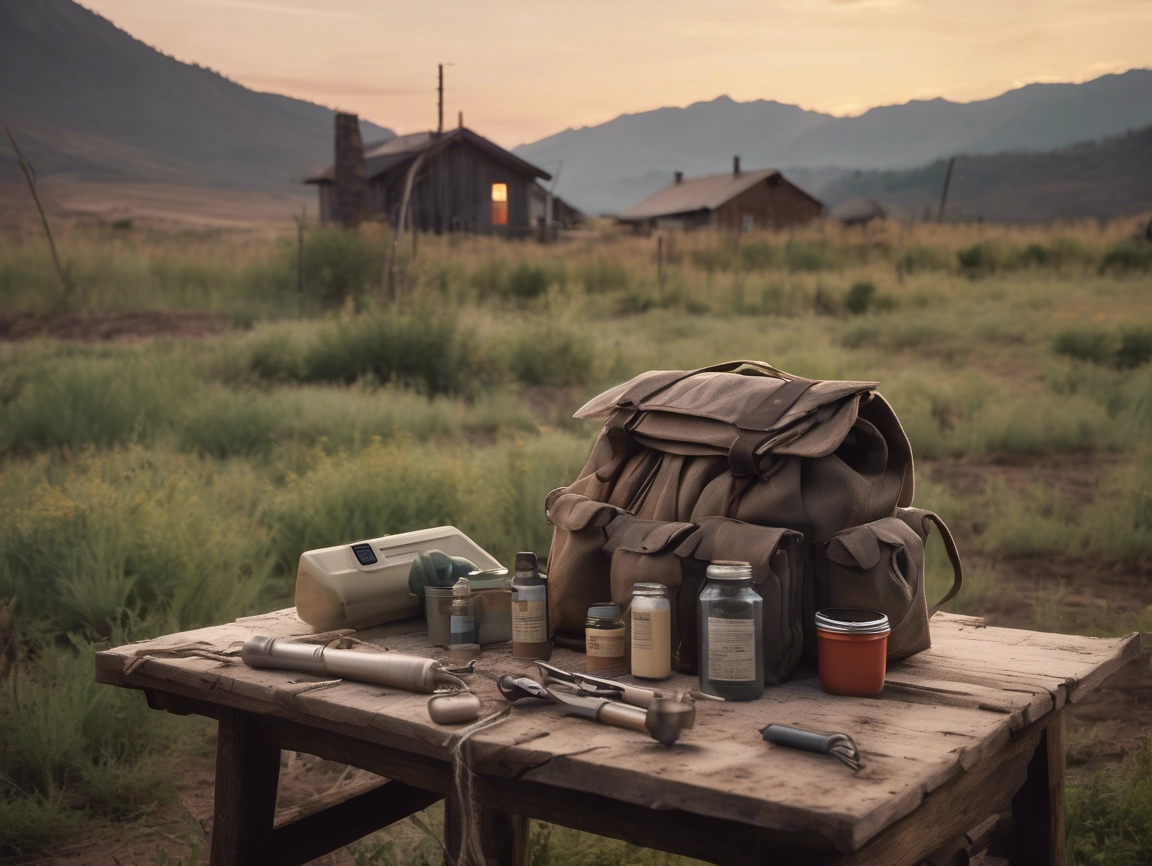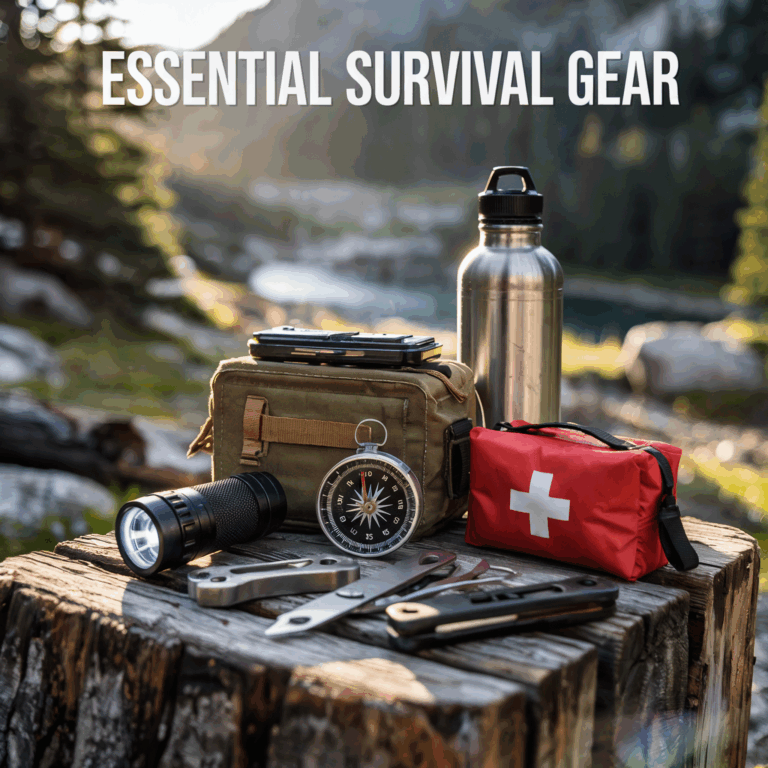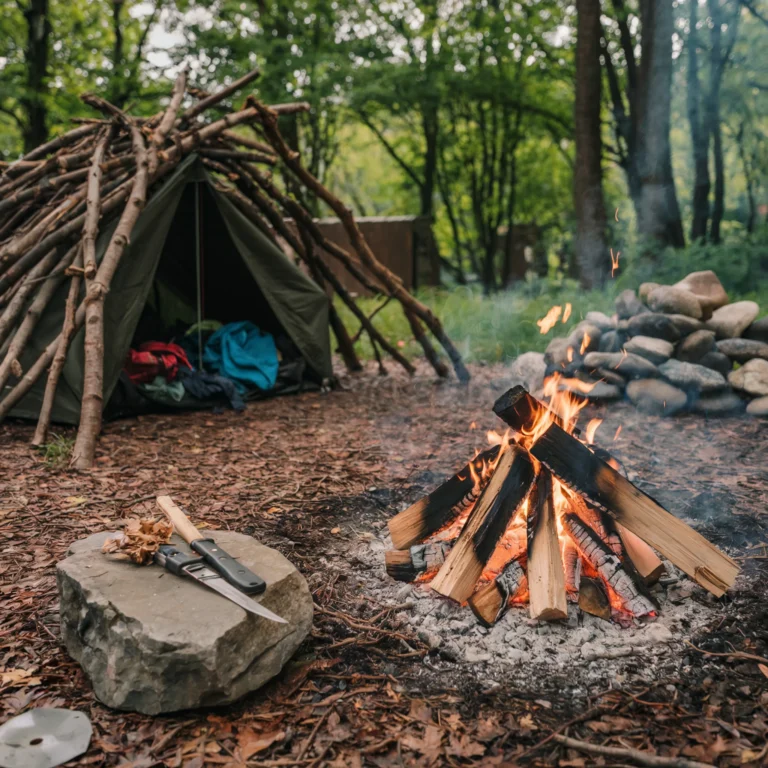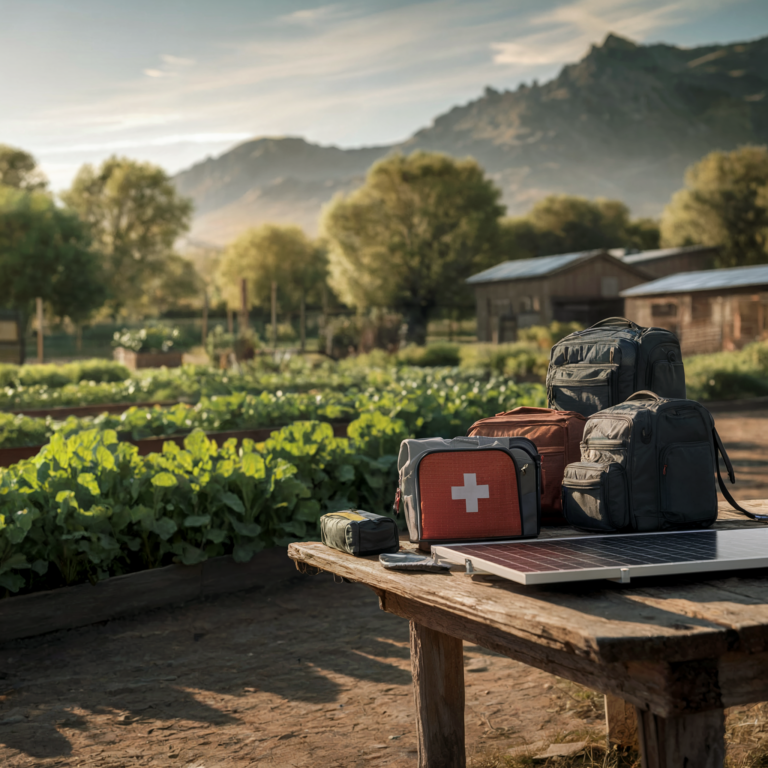We may earn a small commission when you purchase through our affiliate links. This helps fund Quiet Meadows Homesteading and our mission to promote self-reliance. We appreciate your support!
Preparing the Best Bug Out Bag & Emergency Kit for Survival
Have you ever wondered what it really takes to be prepared for the unexpected? Being a prepper isn’t just about collecting supplies, rather, it’s about building a mindset that embraces self-reliance and safety. Whether you’re just starting out or already have a few items stashed away, this guide will walk you through the bug out bag essentials of prepping. We give you key items for a Bug out Bag and Emergency Kit, and how to customize them for different scenarios. Start packing your bags today. Whatever you do, don’t wait until it’s too late! You won’t have time to start preparing once a disaster strikes!
Understanding the Prepping Mindset
First, Prepping means planning ahead. It is not about living in fear, but about building a safety net for yourself. Being Prepared, Not Scared. A Bug out Bag & Emergency Kit In addition, it means learning skills and gathering supplies that help you stand on your own two feet. I learned that a little planning now can save you a lot of trouble later. Every prepper starts small and grows with experience.
Bug Out Bag vs Emergency Kit vs Survival Kit
Although these three are often used interchangeably, they are actually different. A bug‑out bag is a pre-packed, portable kit designed for rapid evacuation and short‑term survival, typically carrying 72 hours of essential gear for use when fleeing a dangerous environment. Meanwhile, an emergency kit (or disaster supplies kit) is a collection of basic household items—such as water, non‑perishable food, and lighting—stored at home, work, or in vehicles to sustain occupants for several days during or after an emergency. In contrast, a survival kit broadly encompasses tools and supplies intended to aid survival in diverse scenarios, from wilderness settings to large‑scale disasters, and ranges in size from compact “pocket” kits to comprehensive setups including shelter and cooking equipment.
Key Items for a Emergency Kit
Let’s talk about what you need in your emergency kit. This survival kit is your lifeline, and every item matters. Here are some essentials:
Water and Hydration:
- Store Enough Water: Aim for one gallon per person per day.
- Portable Filter: A small water filter can be a lifesaver when you need to purify water on the go.
Food and Nutrition:
- Non-Perishable Foods: Keep canned goods, freeze-dried meals, and energy bars.
- Compact Cooking Gear: A portable stove or small grill can help you heat your food.
First Aid and Medical Supplies for your emergency kit:
- Basic First Aid Kit: Include bandages, antiseptics, pain relievers, and any personal medications.
- Extra Supplies: It’s wise to update your kit every six months, especially for certain types of medications.
Tip: I recommend getting a highly rated first aid kit.
Tools and Equipment:
- Multi-Tool: A good multi-tool can help with many small tasks.
- Flashlight and Extra Batteries: You never know when the power might go out.
- Fire Starter: Waterproof matches or a lighter are essential. Personally, I prefer a metal match
Tip: Discover my top picks for survival tools in my review section here.
Important Documents and Cash:
- Waterproof Bag: Store copies of key documents like IDs, insurance, and bank info in a quality waterproof bag.
- Cash: Keep some cash on hand since digital payments may not work in an emergency.
Note: For a more comprehensive list, visit our Preppers Checklist page.
Customizing Your Bug-Out Bag
Now, let’s customize your bug-out bag (BOB). Your bug out bag essentials may vary according to different scenarios. Therefore, I have composed a short bug out bag equipment list and a how you can tailor it:
Urban Emergencies:
- Essentials: Pack a compact backpack with water, non-perishable food, and a basic first aid kit.
- Extras: Add a portable charger and a local transit pass, es.
Rural or Off-Grid Emergencies:
- Essentials: Use a larger bag to include extra food, water, and survival tools, especially if you have a family.
- Extras: Add items like a compact sleeping bag, a small tent, and extra layers of clothing, especially in colder.
Vehicle-Based Evacuations:
- Essentials: Generally, If you’re leaving by car, you can take a larger bag.
- Extras: Include extra clothing, emergency blankets, and a car charger for your phone.
Tip: Keep your bag securely stowed away but easily accessible. It’s important to frequently update the items in your bag and keep an updated list as well
Putting It All Together
Remember, gathering your bug out bag essentials is an ongoing process. You should continue to review and update your supplies regularly. Also, adapt your survival kit based on seasonal changes and new information. Every little step counts when it comes to being prepared.
I’ve learned that a little preparation now means peace of mind later. Trust me, even the smallest effort can make a huge difference when you need it most.
Final Thoughts
Prepping is a journey. Every mistake is a lesson, and every update to your kit makes you a bit more ready for the unexpected. Remember, Every Homestead began with a Single Seed; the same holds true for prepping. So, what’s the first item you’d add to your bug out bag? Drop a comment below—I’d love to hear your thoughts!
Stay safe, be prepared, and keep growing!
Related Resources: Ready.gov is the official government website for Disaster Preparedness.




